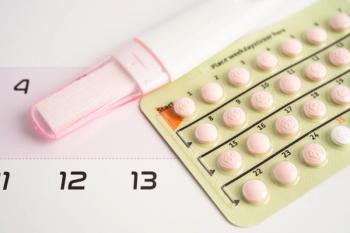
BPCI Model Not Equipped to Tackle Reform of SNF Spending, Researchers Find
The study found that BPCI Model 3, which held postacute facilities accountable for costs of care, was not associated with payment reductions or changes in other quality and selection metrics among skilled nursing facilities.
Lessons learned from a Bundled Payments for Care Improvement (BPCI) effort to find savings in skilled nursing facilities (SNFs) should be used to design more impactful reforms to reduce Medicare spending on postacute care,,according to an editorial published in the
The editorial focused on the study
The study found that BPCI Model 3, which held postacute facilities accountable for costs of care, was not associated with payment reductions or changes in other quality and selection metrics among SNFs.
At least 2 in 5 Medicare beneficiaries require postacute care after discharge from an acute inpatient stay, and use of these services increased from 41% in 2010 to 44% in 2018 with CMS spending an estimated $58 billion annually.
“This investment is critical for patients who cannot recuperate independently at home for several reasons, including their clinical condition, the absence of a caregiver, or the state of the home environment,” wrote editorial author Caroline P Thirukumaran, MBBS, MHA, PhD.
An earlier Model 3 evaluation for major joint replacement of the lower extremity—mostly knee replacements—showeda decrease of $1008 in spending per episode among BPCI SNFs. However, this was mainly a result of a shortened stay and was a well-standardized episode.
In federally contracted evaluations of 11 high-volume episodes, Model 3 was linked to a significant 7.6% ($2171/episode) decrease in 90-day payment and a 3.5-day decrease in the length of SNF stay. There was no comparable change in quality measures besides an increase in health care utilization measures among 3 of the 11 episodes.
Thirukumaran credited the design of Model 3 as an important determinant of whether it potentially motivated SNFs to adjust their performance.
She also said it can provide insights into the next steps for decreasing spending and improving outcomes for SNF-focused reforms, suggesting the following:
- “A focus on high-volume episodes such as joint replacements ensures not only that a larger population is likely to reap the benefits of improvement, but also that analytically rigorous methods can be used to determine the impact of the reform.”
- “Second, the inclusion of quality metrics through quality-adjusted target prices or other means may be vital in motivating an improvement in SNF outcomes. Although only fiscal metrics were included in Model 3, it intended that facilities would affect reductions in spending through improvement in quality, avoidance of adverse events and readmissions, and better care coordination.”
- “Third, the voluntary nature of the reform needs to be considered. It is likely that the participating SNFs were systematically different from SNFs that did not participate in the BPCI. Whether a mandatory reform may help include more SNFs, and realize greater improvements in quality and spending, is worth exploring.”
- “Finally, the magnitude of the reconciliation payments or repayments needs to be considered.”
“While the setting of spending benchmarks is one such approach, one could speculate that the magnitude of these financial incentives may not be large enough for facilities to make significant improvements in the targeted endpoints,” Thirukumaran said. “Careful evaluation of alternative methods for determining rewards or penalties, such as using a percentage of institutional payments, as in the Hospital Readmission Reduction Program, may be worthwhile.”
Reference
Thirukumaran CP. Lessons from Medicare's Bundled Payments for Care Improvement initiative for postacute care. J Am Geriatr Soc. Published online September 12, 2021. doi:10.1111/jgs.17439
Newsletter
Stay ahead of policy, cost, and value—subscribe to AJMC for expert insights at the intersection of clinical care and health economics.

















































